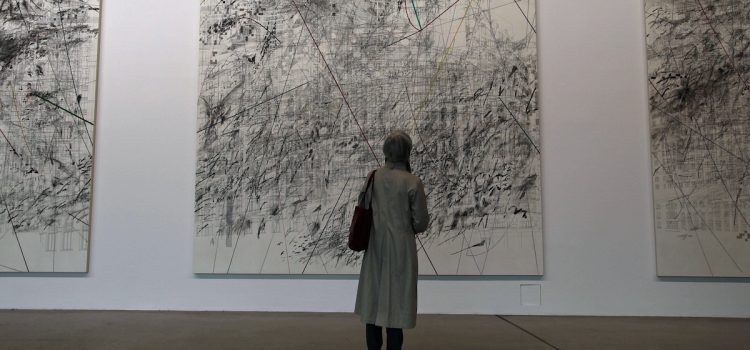

This article is an excerpt from the Shortform book guide to "Ways of Seeing" by John Berger. Shortform has the world's best summaries and analyses of books you should be reading.
Like this article? Sign up for a free trial here .
What is “mystification” in the context of art? How did the dominant class use art to mystify their privilege?
According to John Berger, the author of Ways of Seeing, “mystification is the process of explaining away what might otherwise be evident.” He argues that the dominant class has used art as a medium to “mystify” the disparities in wealth and ensure that the rich get richer and the poor remain poor.
Keep reading to learn about the wider meaning of mystification and how it was used in art.
The Meaning of Mystification
Berger uses the term “mystification“ throughout Ways of Seeing. Because this term is used so heavily in the text, we’ve added a breakdown of the meaning of “mystification”, from its literal definition to the economic context in which it’s used:
- Dictionary definition of mystify: “to perplex the mind; to make obscure”
- Dictionary definition of mystification: “an obscuring especially of capitalist or social dynamics (as by making them equivalent to natural laws) that is seen in Marxist thought as an impediment to critical consciousness.”
In Marxism, mystification refers to the intentional deceiving of the majority working class (proletariat) by the minority upper/middle class (bourgeoisie) to preserve their wealth. In a commodity society such as capitalism, products are made by workers but owned by the workers’ boss, who can sell them for however much he wants. All of the profit from the sale goes to the boss (owner) while the worker receives a set wage. The worker, the labor that goes into the creation of these commodities, and the disparity between his wage and the profit that he generates for his boss, are all invisible—hidden, mystified—to the consumer.
Berger takes this framework of mystification and applies it to the way art is critiqued and owned—particularly the idea that throughout history, art historians and the wealthy elite have obscured ideologies hidden within the art. Though he doesn’t use the term in a strictly Marxist sense, there are clear parallels between the two and it can be inferred that Berger’s Marxist beliefs influenced his perception.
The Mystification of European Oil Paintings
Because of the subjects depicted in paintings from this time period, as well as the monetary value the paintings hold as commodities, European oil paintings are ripe for mystification.
One of the most prominent ways that art is being mystified today is in how it’s represented and explained through art theory and history. According to Berger, the artists and works that are most represented by museum docents and historians don’t accurately reflect the norms of the European oil painting tradition. As a result, the history of the time is invisible to the viewing public and is unable to be learned from.
Berger says that hundreds of thousands of paintings fulfilled the norms of the tradition (the ones discussed here as well as in the next chapter), and only a few hundred broke with it. It’s those few that are hailed as the greatest examples of the genre, but Berger argues that they aren’t examples of the tradition at all; rather, they are (and should be recognized as) exceptions to the rule. This isn’t to say that Berger doesn’t respect these artists; quite the opposite, in fact. Because they broke the rules of the tradition, they pushed art forward, which he says is worthy of reverence in itself.
Some of the artists Berger references in this regard are Rembrandt, Vermeer, and Turner, among others. As you can see below, these artists’ most prominent works don’t fall under the established categories (norms) of the tradition.
From left to right:
- The Night Watch by Rembrandt, 1642
- The Milkmaid by Vermeer, 1657/8
- Fishermen at Sea by Turner, 1796
| Each of the artists represented above are known for their excellence in a particular theme: Rembrandt painted in several genres but is best known for his prolific work in portraiture. His portraits broke with tradition by portraying true human emotion and character rather than a static body placed near evidence of wealth. Vermeer is known for his masterful work of the “genre” genre. He broke with tradition by showing the working class without implications of moral depravity. Turner was a versatile artist who is best known for his landscape paintings. He broke with tradition simply by depicting landscapes in their natural, non-owned state. |
How Wealth and Capitalism Are Protected by Mystification
According to Berger, oil paintings were mystified at the time they were created, and they continue to be mystified today. In both instances, they protect the economic and social order of capitalistic societies.
The rise of the oil painting coincided with the rise of the free art market in Europe. Almost all paintings during this time were done on commission, in large part because of the expense of the venture. The wealthier a person was, the more paintings he could commission. To have a house filled with commissioned paintings was a display of wealth and a point of pride. Because the paintings were commissioned, however, the patron had control over what the painting depicted.
Berger explains that this is a form of mystification because, if you study the paintings from this time period, you are not seeing a record of what was—you are seeing how the wealthiest class of people wanted to be portrayed. These depictions protected their social status, which is inherently connected to wealth, for all of history.
ARCHDUKE LEOPOLD WILHELM IN HIS PRIVATE PICTURE GALLERY BY TENIERS 1582-1649
(Shortform note: Berger explains how mystification benefits the wealthy, but he doesn’t provide a clear argument for how demystification of centuries-old paintings would affect modern-day capitalism. We might infer that if the masses were to understand the class stratification and oppression of the past, they might be more likely to recognize it in modern society and challenge its authority.)

———End of Preview———
Like what you just read? Read the rest of the world's best book summary and analysis of John Berger's "Ways of Seeing" at Shortform .
Here's what you'll find in our full Ways of Seeing summary :
- Why we don't need experts to "translate" works of art for us
- How the dominant class uses art and art criticism to “mystify” the working class
- How our experiences and beliefs influence what we see






